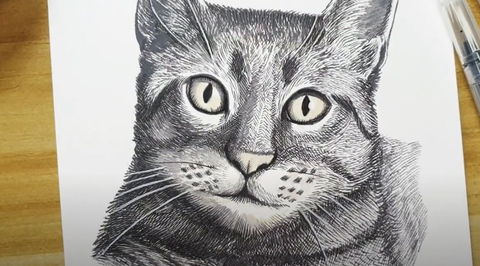Anish Kapoor: The Visionary Sculptor Who Changed Contemporary Art
Last Updated: October 8, 2025
Every artist's inspiration comes from somewhere, and iconic sculptor Anish Kapoor has made his mark in the industry by being inspired by one word—form. Throughout his life, he explored the different forms, shapes, and physical manifestations of objects and mediums to create art.
In this guide, we’ll explore Anish Kapoor's art, preferred artistic mediums and styles, and his mark on the world.

Background and Early Life
Anish Kapoor was born in Bombay (now Mumbai), India, on March 12, 1954, to parents of Iraqi-Jewish and Punjabi heritage. At the age of 19, he moved to London to study art at the Hornsey College of Art for four years and then at the Chelsea School of Art for another year.
After his studies, Kapoor returned to India and became inspired by the different forms and colors of his homeland. It was a different perspective, and he was determined to see it come to life through sculpture.
An Attraction to the Biomorphic
While some artists became attracted to nature or people as their muse when making art, Anish Kapoor was drawn to shapes. He was a sculptor through and through, experimenting with different shapes and forms that depicted themes like space, holes, and others that challenged depth and symmetry.

Soon after, he began challenging himself further by creating works of art on a massive scale. These included installations that were over 35 feet in diameter or as heavy as 100 tons! Soon after, people came to know an Anish Kapoor sculpture as one that greatly challenges space, shape, size, and so much more.
Defying Geometry: Kapoor’s Famous Works
From thought-provoking pieces to breathtaking mammoth installations, an Anish Kapoor sculpture will not fail to impress. Let’s dive into some of his most notable works of art:
-
Cloud Gate (2004)
Arguably his most famous work of art to date, the ginormous silver sculpture called Cloud Gate is located in the Millennium Park in Chicago. It’s 33 feet high, 42 feet wide, and 66 feet long. According to the official Chicago tourist website, it weighs 110 tons, equivalent to 15 adult elephants. It was also given the nickname ‘The Bean’.

Kapoor’s inspiration for this piece was the idea of liquid mercury and how it bends and shapes itself. Through its reflection, people can also see a distorted version of the Chicago skyline, making it a somewhat interactive piece as well. Cloud Gate is one of the most popular attractions in Chicago, boasting up to 25 million visitors per year.
-
Marsyas (2002)
One of Kapoor’s largest sculptures is called Marsyas, a 150-meter-long and 10-story-high structure specially commissioned for the Turbine Hall in Tate Modern, London. This gargantuan structure took up the entire space and instantly stood out because of its size and bright red color.

‘Marsyas’ came from the name of a satyr in Greek mythology, who challenged the music god Apollo. Upon losing, he had ordered his skin to be flayed out of humiliation and defeat. The structure is made of huge steel rings alongside red fleshy membranous material to replicate Marsyas’ story.
-
Turning the World Inside Out - I and II (1995)
A smaller and simpler installation of Anish Kapoor is Turning the World Inside Out, which features two installations. The first is a clear and smooth spherical structure that from afar looks normal, but when you look closer, you’ll see part of it is eating itself inside out.


On the other hand, the second installation can be seen on the floor. It uses the same clear, reflective material as the first installation, but this time depicts our world as we know it being sucked down and turned inside out as well.
-
Making the World Many (1997)
If some of Kapoor’s art features smooth and clear surfaces, then his 1997 installation of Making the World Many is the opposite of that. This sculpture is made out of stainless steel and features a bunch of bulbous shapes protruding from the structure.

This work of art not only challenges structure and clarity but also turns out to be an interactive experience for the viewer. Coming close to this installation will allow you to see yourself and other surrounding reflections in a distorted manner.
-
Mother as Mountain (1985)
Red is a color that can be found in multiple sculptures by Anish Kapoor. His sculpture called Mother as Mountain is no different, but it features different geometric shapes that resemble the body parts of a woman. It depicts themes of birth and the haunting beauty of the origin of life.

As the title suggests, the structure is shaped like a tall mountain, with geometric shapes framing the sides. At the moment, this sculpture can be found at the Walker Art Center in Minneapolis, United States.
A Legacy of Creativity and Innovation
Today, Kapoor has been granted many accolades. Some include the prestigious Turner Prize, a knighthood (yes, he’s a real knight!), and was even named Commander of the Order of the British Empire. He even collaborates with known brands like Bvlgari and notable artists to make amazing creations.
We hope you found a bit of artist inspiration with Anish Kapoor today, and like him, remember how crucial it is to challenge the boundaries of art and evolve as you learn. Start your artistic journey when you explore techniques, stories, and more In The Creative Corner!







